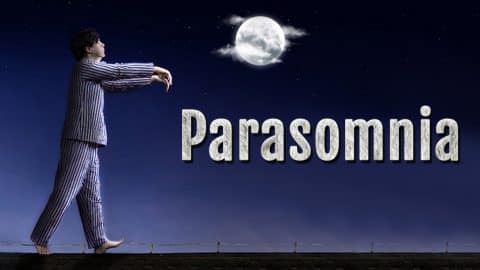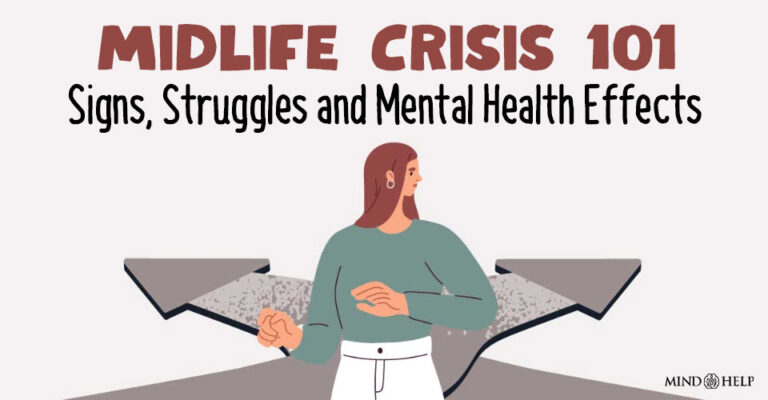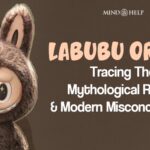Parasomnias are abnormal behaviors that occur during sleep, such as sleepwalking, nightmares, and sleep talking. These fascinating sleep disorders can disrupt normal sleep patterns and cause significant distress for individuals affected by them.
What Is Parasomnias?
Parasomnia is a type of sleep disorder characterized by dysfunctional and unwanted behaviors, movements, and experiences while sleeping. These mostly occur while a person is falling asleep, sleeping, or waking up.
Even though their complex behavior may indicate that the sufferers are awake and acting deliberately, they actually remain asleep during the occurrences. They may even have no memory of the events. People with parasomnia 1 Fariba, K. A., & Tadi, P. (2021). Parasomnias. Available from: https://www.ncbi.nlm.nih.gov/books/NBK560524/ often have trouble sleeping properly during the night.
Parasomnias can occur at different stages of sleep, particularly those sleep states which include partial arousals. This disorder may occur in a person independently or in a setting of trauma, psychiatric illness, other sleep-related disorders, Parkinson’s disease, and spinocerebellar ataxia. It is often seen more in children than in adults.
Research has identified this condition as a clinical phenomenon that arises from brain transitions during REM sleep.
- Nightmares
- Night Terrors
- Sleepwalking
- Sleep Talking
- Confusional Arousals
- Nocturnal Leg Cramps
- Sleep Paralysis
- Irregular Heart Rhythms
- REM Sleep Behavior Disorder (RBD)
Read More About Nightmares And Nightmare Disorder Here
Symptoms Of Parasomnias
There can be several symptoms 2 Fleetham, J. A., & Fleming, J. A. (2014). Parasomnias. CMAJ : Canadian Medical Association journal = journal de l’Association medicale canadienne, 186(8), E273–E280. https://doi.org/10.1503/cmaj.120808 that trigger unusual behavior. The common parasomnia symptoms include:
- Waking up confused or disoriented
- Not remembering doing certain things after waking up
- Finding unfamiliar cuts on the body
- Difficulty sleeping throughout the night
- Daytime sleepiness or fatigue
- Screaming, crying, or waking up in fear
Parasomnias In Children
Parasomnias are more prevalent in children 3 Singh, S., Kaur, H., Singh, S., & Khawaja, I. (2018). Parasomnias: A Comprehensive Review. Cureus, 10(12), e3807. https://doi.org/10.7759/cureus.3807 than in adults. Children with neurological or psychiatric conditions like epilepsy or ADHD are more prone to developing parasomnias—with stress and sleep deprivation acting as major contributing factors to the same. The phenotypes of pediatric parasomnias can be categorized as:
- Disorders of arousal from NREM sleep
- Parasomnias associated with REM sleep
- Other parasomnias
Children suffer from parasomnias because of their immature sleep cycles. The boundaries between wakefulness and sleep are still underdeveloped and this ultimately results in a mixed state of consciousness.
However, most children are found to completely recover from this disorder during their adolescence as their sleep-wake cycle matures. Children with parasomnia may experience more crying and fear than adults.
Read More About REM Sleep Here
Parasomnias In Adults
NREM parasomnias can also persist into adulthood and in some cases can even start de novo in adulthood. Recently, authors of a case study hypothesized hyperthyroidism to be the cause of adult-onset sleepwalking in a patient with no history of the disorder. Apart from this singular case study, the reasons for the variable onset and continuity of NREM parasomnias are unknown.
Adults with NREM parasomnias can sleepwalk and have confusional arousals as a consequence of sleep deprivation, and behaviors may also involve complex behaviors such as violence, sexualized behavior, and self-harm. While such complex behaviors may be semi-purposeful or inadvertent, in some cases they may have serious medico-legal implications.
Types Of Parasomnias
Parasomnias are popularly divided into three categories, including:
1. Non-REM sleep parasomnias
Non-rapid eye movement (NREM) parasomnias are abnormal behaviors arising primarily but not exclusively during non-REM stage three (N3) sleep. Its phenotypes include:
- Confusional arousals
- Sleepwalking
- Night terrors (or sleep terrors)
- Sleep-related eating disorder (SRED)
- Sleep-related sexual abnormal behaviors
2. REM sleep parasomnias
REM sleep parasomnias are more likely to emerge during the later portion of the sleep period, when REM sleep is most abundant. Its phenotypes include:
- REM sleep behavior disorder (RBD)
- Recurrent isolated sleep paralysis (RISP)
- Nightmare disorder
3. Other types of parasomnias
There are several types of uncategorized parasomnias, including:
- Exploding head syndrome
- Sleep-related hallucinations
- Sleep enuresis
What Causes Parasomnias?
There can be several reasons why Parasomnia can occur. Studies have found that medical conditions, activities, and substances that increase slow-wave sleep or that lead to increased arousal can trigger this condition among others. Some of the most common causes of parasomnia are as follows:
- Stress [Read more]
- Anxiety [Read more]
- Depression [Read more]
- Post Traumatic Stress Disorder (PTSD) [Read more]
- Substance Abuse
- Side effects of certain medications
- Irregular sleep schedules like night shifts at the workplace
- Other sleep disorders such as insomnia [Read more]
- Sleep deprivation
- Neurological conditions such as Parkinson’s disease
Diagnosis Of Parasomnias
The diagnosis of parasomnias usually involves a Polysomnography or sleep study or/and sleep disorder tests. The patient will sleep in a lab overnight so that a specialist can evaluate his/her sleeping behavior. Their brain waves, breathing patterns, and heart rate would be recorded to make a diagnosis.
The patient’s medical history is evaluated to detect any underlying medical conditions. The doctor will also evaluate the family history and lifestyle. According to the results, the sleep specialist will recommend treatment methods.
Treatment For Parasomnias
Some of the most common and effective treatment options 4 Singh, S., Kaur, H., Singh, S., & Khawaja, I. (2018). Parasomnias: A Comprehensive Review. Cureus, 10(12), e3807. https://doi.org/10.7759/cureus.3807 available for parasomnia include:
1. Medication
If the disorder is frequent and recurring, certain medications can be used to manage the symptoms, including:
- Topiramate
- Antidepressants
- Dopamine antagonists
- Melatonin
- Levodopa
- Benzodiazepines like clonazepam
2. Psychotherapy
This therapy involves talking to a psychiatrist in order to get to the root of the problem. During this therapy, the mental health expert assesses the patient’s moods and behaviors and helps to channel them to their advantage.
Read More About Psychotherapy Here
3. Cognitive behavioral therapy (CBT)
This is a common form of parasomnia treatment, since this disorder is often related to underlying mental health conditions such as stress or anxiety. Cognitive-behavioral therapy, when administered with medication, is used to evaluate the thoughts and patterns that trigger unwanted behavior.
The negative thought patterns are then replaced with positive factors in order to reach the desired outcome. This therapy often helps to devise a coping mechanism in order to deal with the symptoms.
Read More About CBT Here
4. Hypnotherapy
Hypnotherapy 5 Hauri, P. J., Silber, M. H., & Boeve, B. F. (2007). The treatment of parasomnias with hypnosis: a 5-year follow-up study. Journal of clinical sleep medicine : JCSM : official publication of the American Academy of Sleep Medicine, 3(4), 369–373. is considered a treatment choice for patients with “functionally autonomous” (apparently self-perpetuating) parasomnias.
5. Eye movement desensitization and reprocessing (EMDR) therapy
EMDR therapy improves the healthy processing of traumatic memories and rapidly ameliorates negative emotions, beliefs, and physical sensations.
6. Relaxation therapy
This therapy uses a number of relaxation techniques that are designed to teach someone how to relax on their own. These techniques may include breathing exercises, meditation, or progressive muscle relaxation exercises to reduce physical and mental tension.
7. Home treatment methods
Medical experts may suggest the following methods for home treatment of parasomnia:
- Scheduling awakenings
- Creating a safe sleep environment
- Maintaining a sleep hygiene schedule
Coping With Parasomnias
Consider the following tips for coping with parasomnias:
- Educate yourself about good sleep hygiene practices
- Research into how to stop parasomnias
- Establish a realistic sleep schedule and maintain this sleep timing with regularity every night
- Abstain from daytime napping and resort to “power naps”, if necessary
- Maintain low light levels and comfortable temperature settings in the bedroom
- Create a comfortable sleeping environment with mattresses, pillows, curtains, rugs, etc.
- Maintain a data sheet for the body type, sleep preferences, and the best sleep positions
- Limit “screen time” before bedtime
- Consider activities like sex, cold shower, massages, etc. that enhance sleep
- Manage stress levels. Several parasomnias have been linked to high-stress levels and finding ways to manage them can help in reducing parasomnia symptoms
Takeaway
Sleep disorders like parasomnias are a growing public health concern, affecting millions of children and adults worldwide. If left untreated, these can negatively impact our quality of life and social relationships. Therefore, timely diagnosis and the right treatment options should be availed to address their negative consequences.
At A Glance
- Parasomnia is a type of sleep disorder characterized by dysfunctional and unwanted behaviors, movements, and experiences while sleeping.
- It includes night terrors, nightmares, sleepwalking, etc.
- Parasomnias are more common in children than adults.
- The common parasomnia causes are linked to stress, anxiety, untreated trauma, ADHD, etc.
- Parasomnias can be easily treated with psychotherapies and pharmacotherapies.
Frequently Asked Questions (FAQs)
1. What is parasomnia?
Parasomnia is a type of sleep disorder characterized by dysfunctional and unwanted behaviors, movements, and experiences while sleeping.
2. Is parasomnia a mental illness?
Parasomnias comprise mental health conditions included in the overarching category of sleep disorders.
3. What is the difference between parasomnias and dyssomnia?
Primary disorders can be divided into parasomnias and dyssomnias. Parasomnia sleep disorders cause abnormal activities during sleep, such as sleep terrors or sleep walking. Dyssomnia sleep disorders cause trouble falling asleep or staying asleep.
4. Are parasomnias dangerous?
Parasomnias are not in and of themselves worrisome; the main danger is when a person with the condition unknowingly causes injury to themselves or to others.















